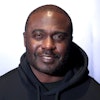In 1980, Dick Gregory spoke at Pierce College about a subject called diversity and, although I was a young teenager, his message was dynamic. A few years later, I saw reports on the news regarding Jessie Jackson tackling the issue of diversity on the corporate level. It seemed to me that, when certain companies had matters that pertain to hiring practices of African-Americans, they would bring Jackson in to train staff and management.
We now live in a world attempting to deliver a conscious effort of diversity daily. The idea of diversity encompasses acceptance and respect. It means understanding that each is unique and recognizing our individual differences. These can be along the dimensions of race, ethnicity, gender, sexual orientation, socioeconomic status, age, physical abilities, religious beliefs, political beliefs or other ideologies. It is the exploration of these differences in a safe, positive and nurturing environment. It is about understanding each other and moving beyond simple tolerance to embracing and celebrating the rich dimensions of diversity contained within each.
However, in college sports, we are missing many of the key elements associated with the concept of diversity.
Since 1980, the area of diversity has grown to include the philosophy of Inclusion. According to the NCAA, inclusion is the process of creating an environment that not only recognizes and appreciates the talents, skills and perspectives of every individual, but uses those skills to reach educational and organizational objectives. Diversity and inclusion are intended to improve the learning environment for all student-athletes and enhance excellence within the NCAA.
Most of the individuals involved in sports view diversity and inclusion as a tool to measure hiring practices among head coaches, the hiring of senior-level athletic administrators, as well as promote an inclusive culture that fosters equitable participation. The lack of diverse hiring at the top has a direct correlation to the lack of understanding of the concept of diversity and inclusion and the Black athlete. The idea of diversity and inclusion in understanding the Black athlete’s issues and the challenges associated with sports participation continues to be the elephant in the room.
According to Dr. Harry Edwards, when O.J Simpson was asked to take a stance in the civil rights movement, his response was, “I am not Black, I am O.J.,” implying being a gifted athlete provided him with immunity or entitlement on a societal scale. Today, the Black athlete is plagued with issues concerning graduation rates, increased arrest rates of current and former athletes, as well as a host of social and behavioral problems.
If we examine the purpose and meaning of diversity and inclusion, specifically focusing on the Black athlete, we need to ask and answer the following:















